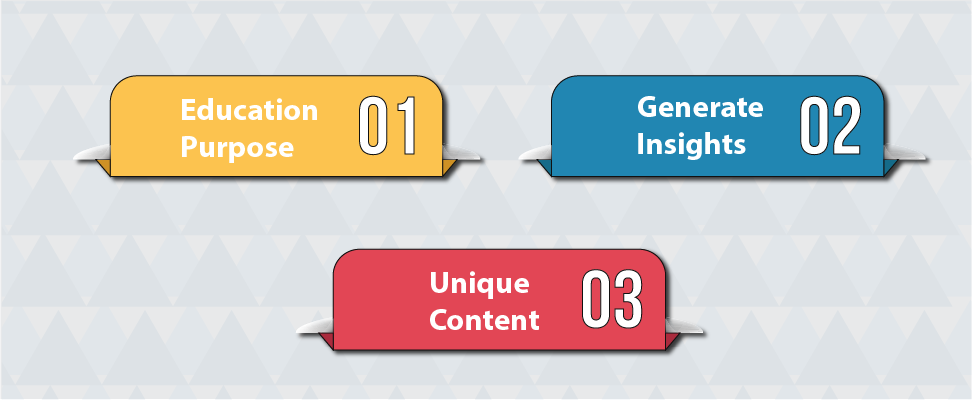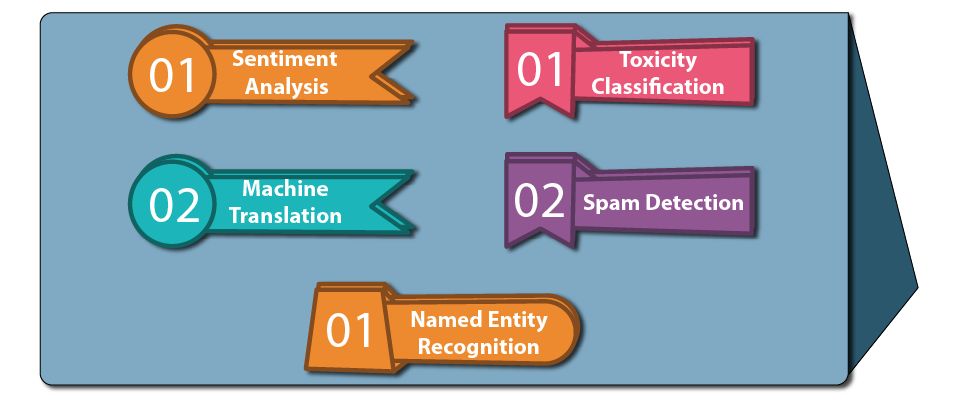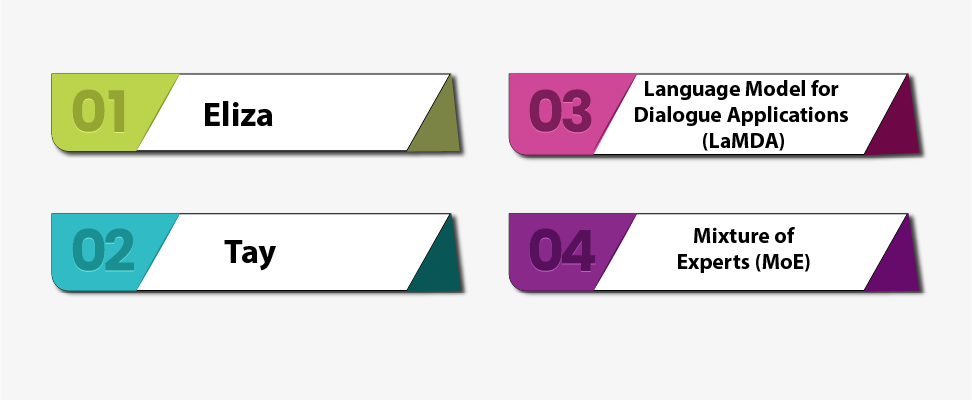Table of Contents
ToggleIntroduction
Natural Language Processing (NLP) is a field of artificial intelligence (AI) that helps computers interpret, understand, and generate human-like responses. Whereas the Large Language Model (LLM), based on deep learning techniques, is trained on large amounts of text data to understand and generate content in various forms, like text, videos, and audio. Both languages are part of AI, but their differences lie in the scope and purpose. This blog sheds light on NLP and LLM differences.
NL P vs. LLM: Overview
A large Language model (LLM) is an advanced model trained in deep learning techniques and massive datasets. Due to this, it can produce human-like text and perform other tasks like generating answers, translating one language to another, tokenization, analyzing sentiment, and various other natural processing tasks. LLMs are of two types: autoregressive models and conditional generative models. Autoregressive models generate one text at a time, and conditional generative models generate the context text based on the prompt that it receives from the users.
Natural Language Processing (NLP) is a subfield of natural language understanding (NLU) and natural language generation (NLG). NLU determines the intended meaning of the text, and NLG focuses on text generation by a machine. It helps computers understand and interpret how humans communicate using various methods like grammar, cultural context, idioms, dialects, and phrases. Traditional machine learning NLP techniques are of two types, i.e., logistic regression models and naive bayes. Logistics predict the probability that an event will occur based on some input. In NLP, this helps to perform sentiment analysis, spam detection, and toxicity classification. Naive Bayes uses the formula P(label | text) = P(label) x P(text|label) / P(text) and then helps to find spam detection or bugs in software.
Must read: What is Generative AI?
LLM vs. NLP: Use Cases
LLMs are widely used in various tasks that involve understanding and processing language. The following are the common tasks that LLMs are commonly used for:

- Education Purpose: LLMs are used to create personalized learning experiences for students. It is also used to build chatbots that can answer student questions and provide feedback.
- Generate Insights: LLMs are great for analyzing extremely large sets of text to identify patterns and then generate insights. This makes it a valuable tool for market researchers, competitor analysts, and legal document reviewers.
- Unique Content: Since LLM is a subset of Gen AI, it can produce content in the form of emails, poems, blogs, scripts, code, letters, and even music. Besides, it can summarize information, translate languages, and answer your questions in an informative way.
NLP is used for various language-related tasks. The following are the common uses of natural language processing:

- Sentiment Analysis: It is a process to classify the emotional intent of a text. This analysis tells whether the user’s feedback or response was positive or negative. This analysis is extremely useful for e-commerce sites to better understand their customers and provide better experiences for them.
- Toxicity Classification: This allows online sites and e-commerce platforms to classify threats, insults, obscenities, and hateful comments towards products or services. This also helps these sites improve conversation and silence offensive comments or defamation.
- Machine Translation: It translates different languages based on the user’s input. One of the best examples of this is Google Translate, which is widely used to translate any language. This model helps improve communication on social media platforms such as Facebook or Skype.
- Spam Detection: This helps detect whether the email is spam or not. Gmail uses these spam detection models to identify unsolicited and unwanted emails and move them to a spam folder.
- Named Entity Recognition: It detects and extracts entities like names, places, and organizations. This is useful for applications that need to summarize many pieces of data at once, and the best part is that there is no chance of misinformation.
LLM vs. NLP: Inner Workings
LLM: The architecture of large language models is based on a transformer. Whenever a prompt is given by the user, it starts to read related data from the internet. For this, LLMs rely on its innovative architecture and structure transformers, which help it understand and remember vast amounts of information. Then it starts to break down the sentences into smaller chunks, as this allows LLMs to work with language more efficiently. After that, it reads individual words and tries to relate the words to each other in a sentence. By doing this, LLMs will get a clear picture of the sentences. This whole process is called “general learning.” Once LLMs complete the general learning, it train on specific topics. This allows LLMs to respond to user commands accurately and in more detail. Thus, whenever a user writes a prompt to large language models like GPT-3, LLMs respond to a question or instruction based on the data that they have been trained on. Therefore, it can easily comprehend and generate the text like a human.
NLP: NLP architectures find the relationships between letters, words, and sentences in the datasets. Then it processes data and turns the words into a format that a computer can understand. It again converts the similar words into base form by using tools like SpaCy and NLTK, which is called stemming and lemmatization. Once this process is complete, it goes through the sentence segmentation process, where it breaks a large text into linguistically meaningful sentences. During this process, it removes the common words that don’t have much information and finally splits the text into individual words. Lastly, it uses features like Bag-of-Words and TF-IDF to weigh down the frequencies of important words occurring multiple times in a document. So this is how NLP works.
LLM vs. NLP: Differences
| Factors | NLP | LLM |
|---|---|---|
| Accuracy | High accuracy but face challenges in tasks that require a rich understanding of context | Reliable in generating coherent language but also generates bias and inaccurate answers |
| Performance | High accuracy in tasks like syntax parsing and entity recognition | Generates human-like text and manages a wide spectrum of language tasks |
| Efficiency/Scalable | Efficient with the tasks with lower computational demands | Highly scalable with a diverse task that requires greater computational resources. |
| Healthcare | Processing medical records, extracting pertinent patient information, and enabling predictive diagnostics | Facilitate patient interaction, disseminate information, and provide general medical advice. |
| E-commerce | chatbots, personalized recommendations, and analysis of customer feedback | Generates content, manages large-scale customer interactions, and automates aspects of digital marketing. |
| Finance | Sentiment analysis, risk assessment, and enhancing customer service | Creates Financial reports, conducting market analyses, and automating customer service interactions |
What Are the Popular LLMs and NLP Models?
The following are the top 5 popular LLMs used today:

- Generative Pre-trained Transformer 3 (GPT 3): GPT 3 is developed by OpenAI with over 175 billion parameters. When it was released in 2023, it was an overnight sensation. It can perform tasks like content generation, summarization, and translation.
- XLNet: It is a state-of-the-art performance language model built upon the transformer architecture of BERT. XLNet was developed to overcome BERT’s masked language model.
- Bidirectional Encoder Representations from Transformers (BERT): Developed and released by Google, BERT is similar to GPT 3. It is also trained in an extensive collection of written and spoken data. Due to this, BERT can also generate content in various forms.
- Robustly Optimized BERT Pretraining Approach (RoBERTa): It is an improved version of BERT developed by Facebook. It has better performance than BERT and performs better on several language tasks like text generation, text classification, answering questions, and name entity recognition.
- Text-to-Text Transfer Transformer (T5): This LLM was developed to address the limitations, like a unified framework, and advance the state-of-the-art faced by NLP. Like other LLM models, T5 can translate text to another language, create a summary, and answer questions.
The following are the four popular NLP models:

- Eliza: Introduced in the 1960s, Eliza is one of the oldest NLP models today. It uses pattern-matching techniques to mimic the human response and a series of rules without encoding the context of the language.
- Tay: It is a chatbot released by Microsoft in 2016 to tweet like a teenager on Twitter. It was designed to learn and mimic the patterns of the users it interacts with, but it adopted offensive language and racist comments. That led Microsoft to deactivate it. Despite its short-lived existence and negative reputation, Tay remains a notable example of the challenges and ethical considerations involved in developing conversational AI systems.
- Language Model for Dialogue Applications (LaMDA): Developed by Google, LaMDA is a chatbot trained on dialogue. This NLP model aims to provide sensible and specific responses to conversations.
- Mixture of Experts (MoE): It is a machine learning technique used for modeling complex relationships within data by combining multiple simpler models or experts. It is used in computer vision, speech recognition, and recommender systems, where complex relationships and interactions are prevalent in the data.
Also Read: ChatGPT vs Google Bard LLMs vs. NLP: Future Implications
The release of ChatGPT 3 has been the biggest turning point in the history of AI. Also, this has sparked interest in large language models, like chatbots and the virtual assistant Alexa. However, there are huge concerns about how it will impact the job market and society. Since LLMs and NLP could replace humans in most of the automated tasks, like human customer executives with the customer support chatbot, writing tasks by Gen AI, and many more tasks, this may disrupt the job sector and could lead to huge job losses for those who work in these sectors. But having said that, it is important to note that LLMs and NLPs are not replacements for humans. Rather, these are the only tools through which we can be more productive and efficient at work. Even though some of the jobs can be automated, new ones will also be created at the same time. Both LLMs and NLPs can impact society in positive ways by creating personalized education for better education and healthcare plans for improving patients lives. Similarly, these language models can assist governments and businesses by analyzing large amounts of data and generating valuable insights.

Don't miss out on your chance to work with the best
Apply for top global job opportunities today!
Conclusion
Both NLP and LLMs have distinctive approaches to processing human language. NLP focuses more on specific algorithmic modeling, and LLMs focus on broad capabilities through massive pre-training. Rather than competing, these language models complement each other. The integration allows for more advancement in AI and opens new possibilities, like more advanced future AI assistants that can understand complex human interactions, improved robotics abilities, and sophisticated content generation tools. This article walks you through the inner workings of LLM and NLP, their use cases, and their differences. If you’re an AI software engineer and looking for a role in an esteemed organization, then sign up with Olibr.
Take control of your career and land your dream job
Sign up with us now and start applying for the best opportunities!

FAQs
Some of the natural language processing examples are smart assistants, personalized CX, language translation, chatbots, email filters, and text analytics.
The natural language processing algorithms are lemmatization and stemming, named entity recognition, and tokenization.
NLP faces several challenges, like ambiguity, handling context and semantics, dealing with out-of-vocabulary words, addressing noise or incomplete data, and managing computational resources for large-scale processing.
The most popular libraries are Natural Language Toolkit (NLTK), spaCy, Gensim, Stanford CoreNLP, and Hugging Face’s Transformers.

